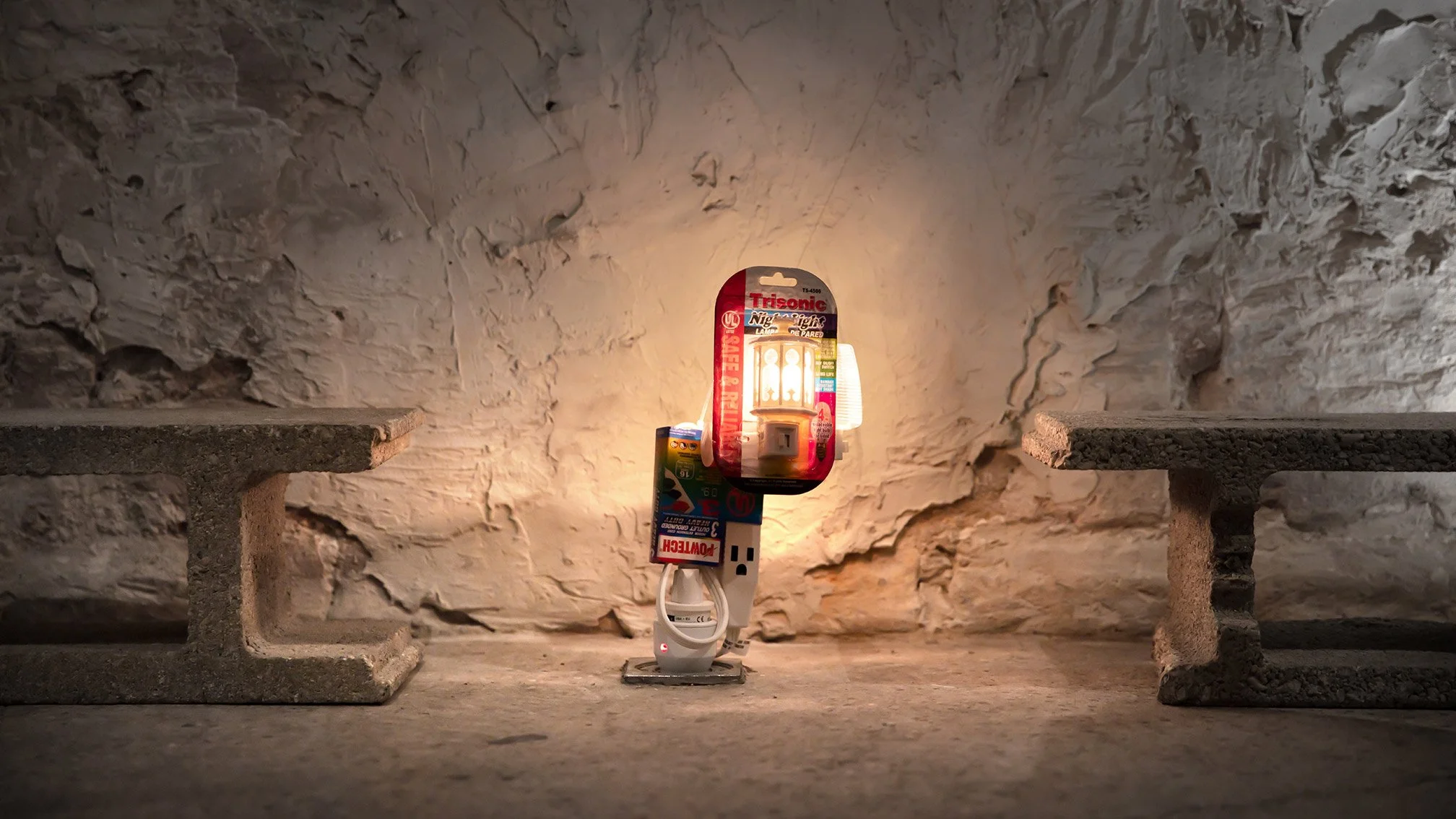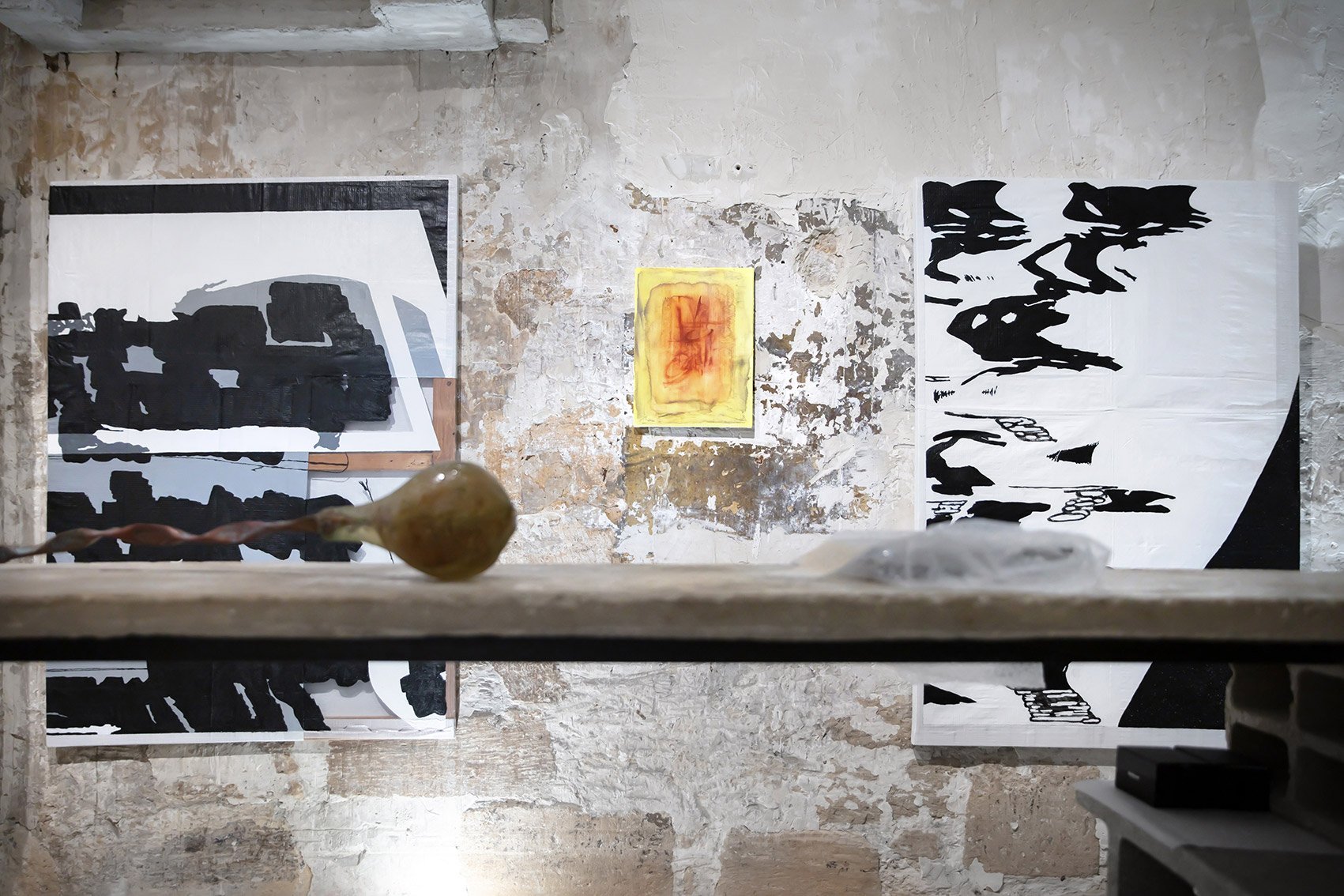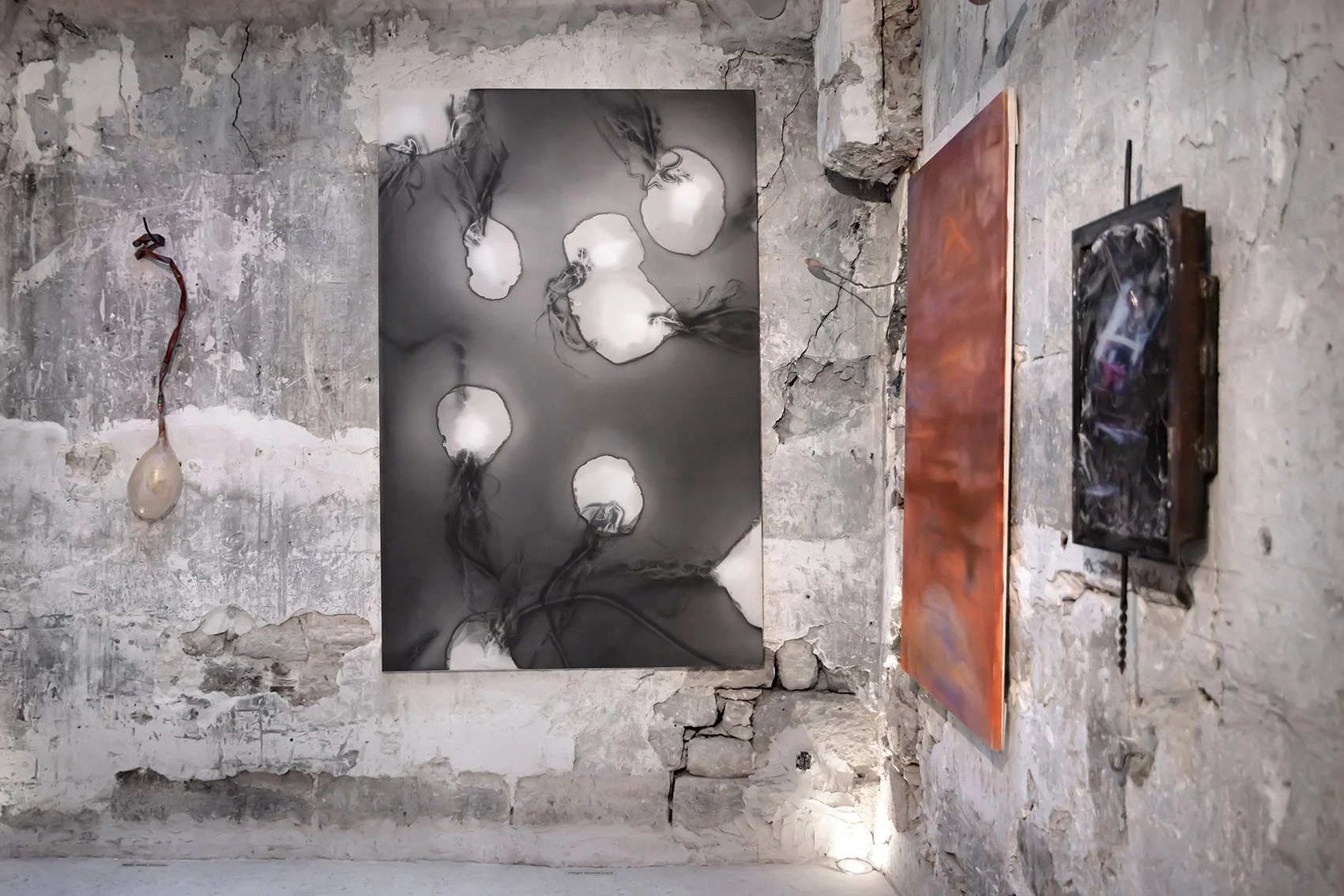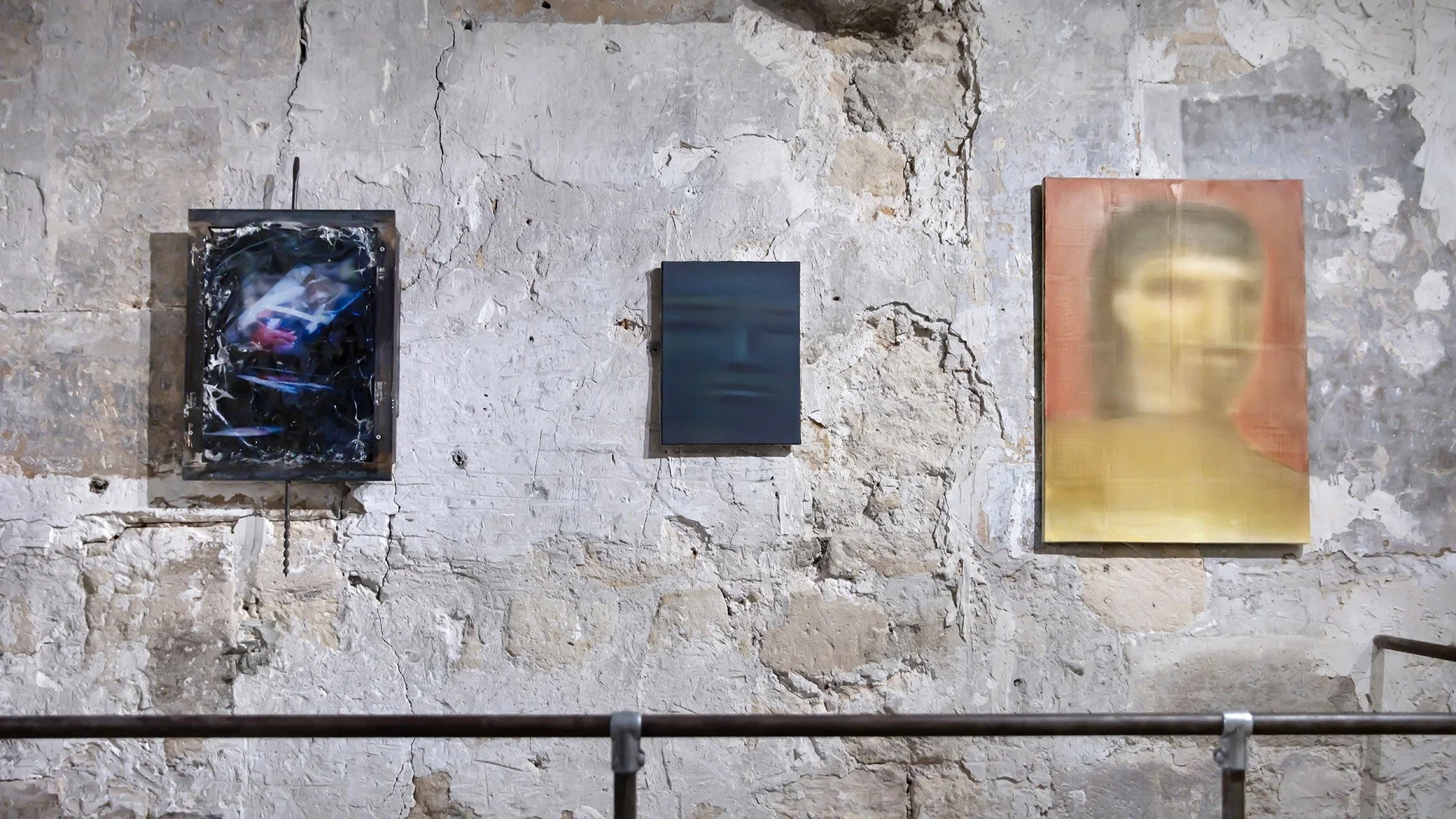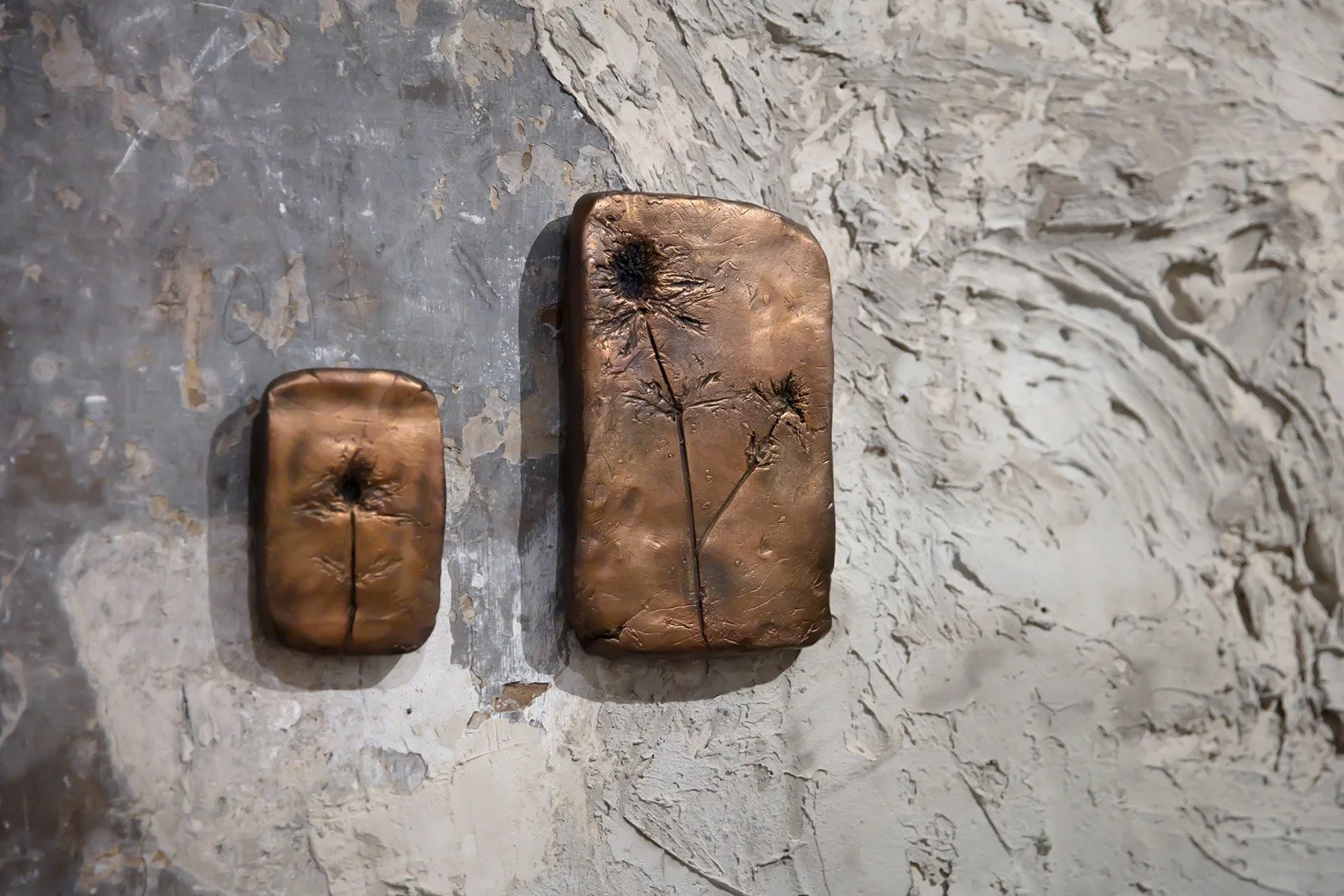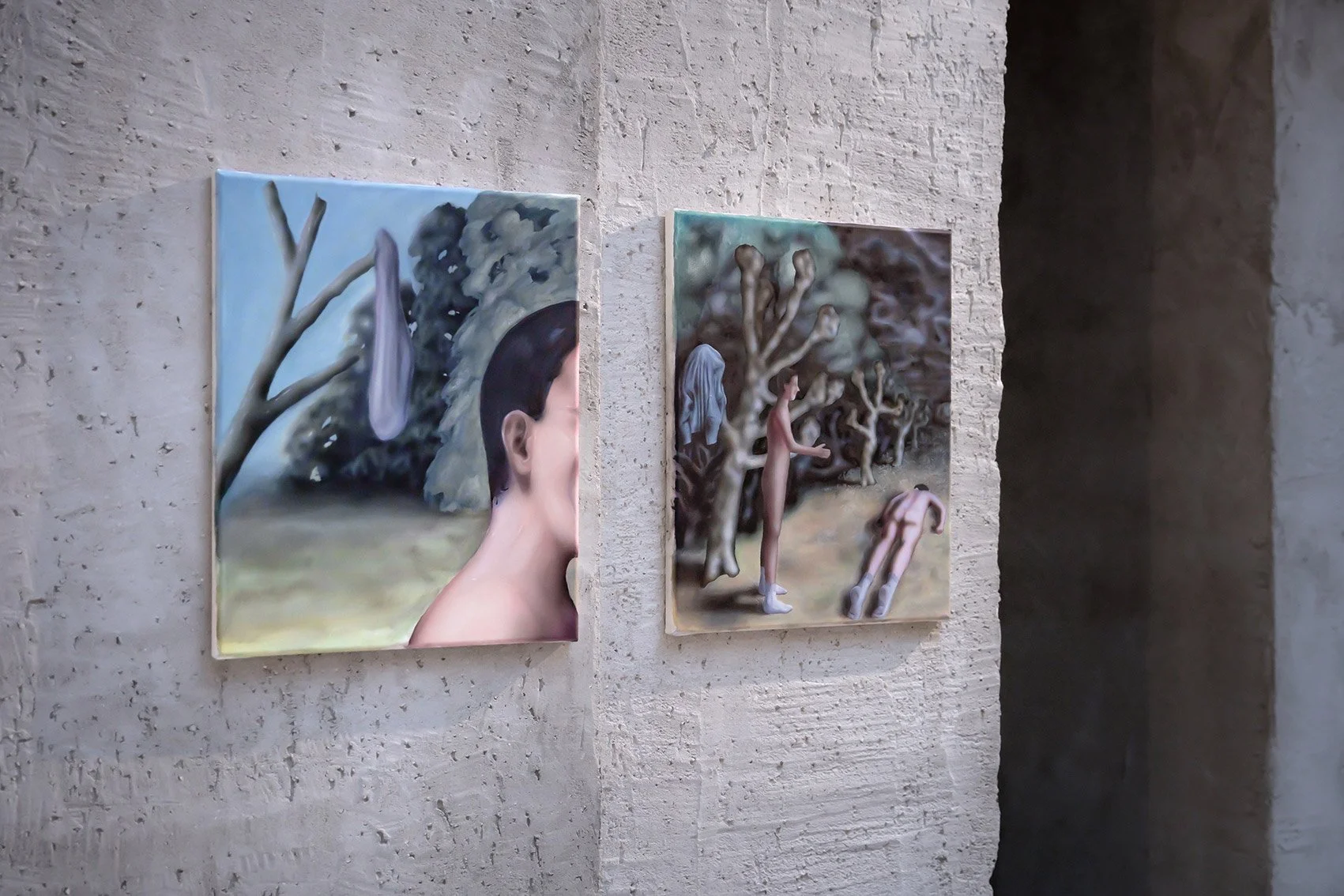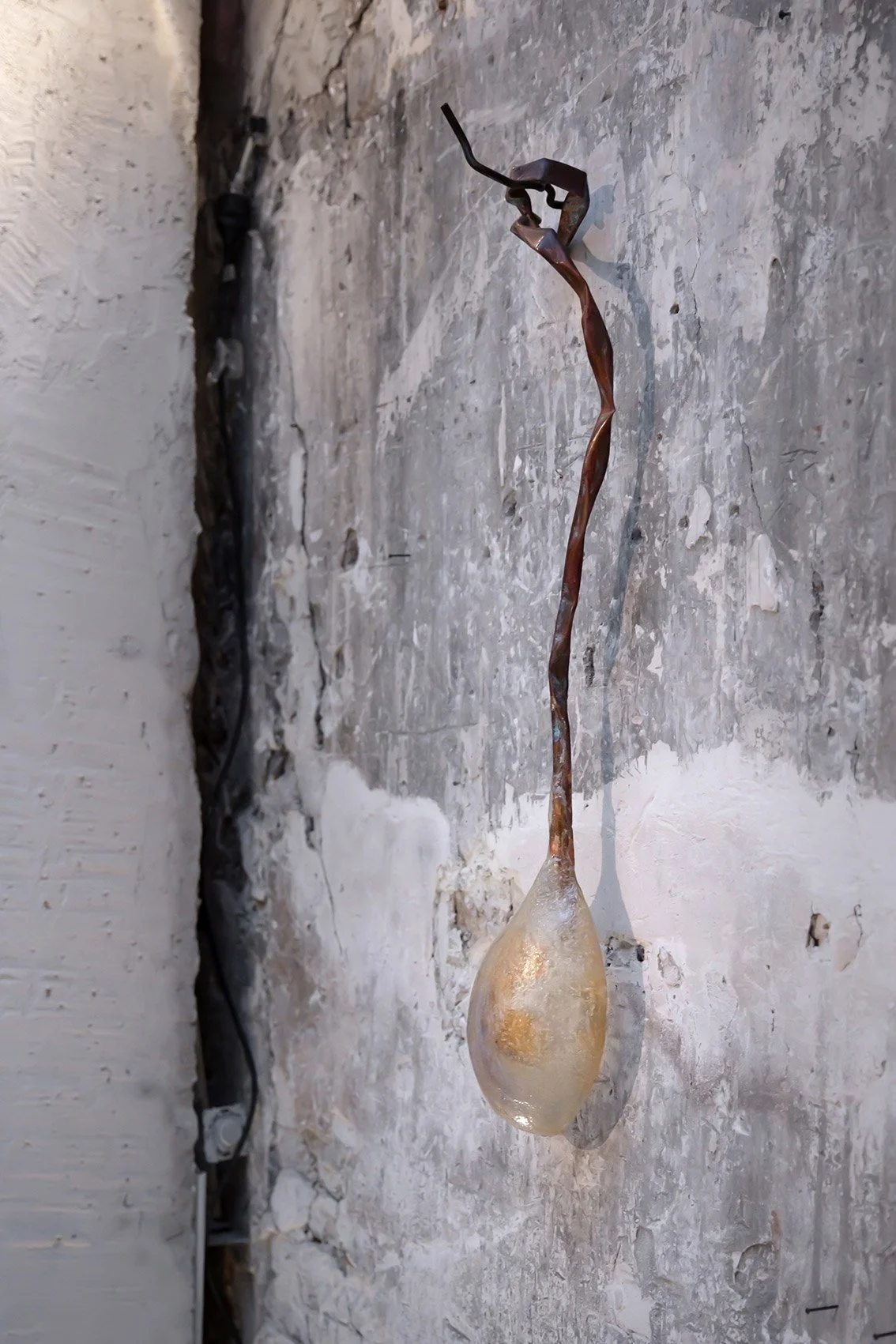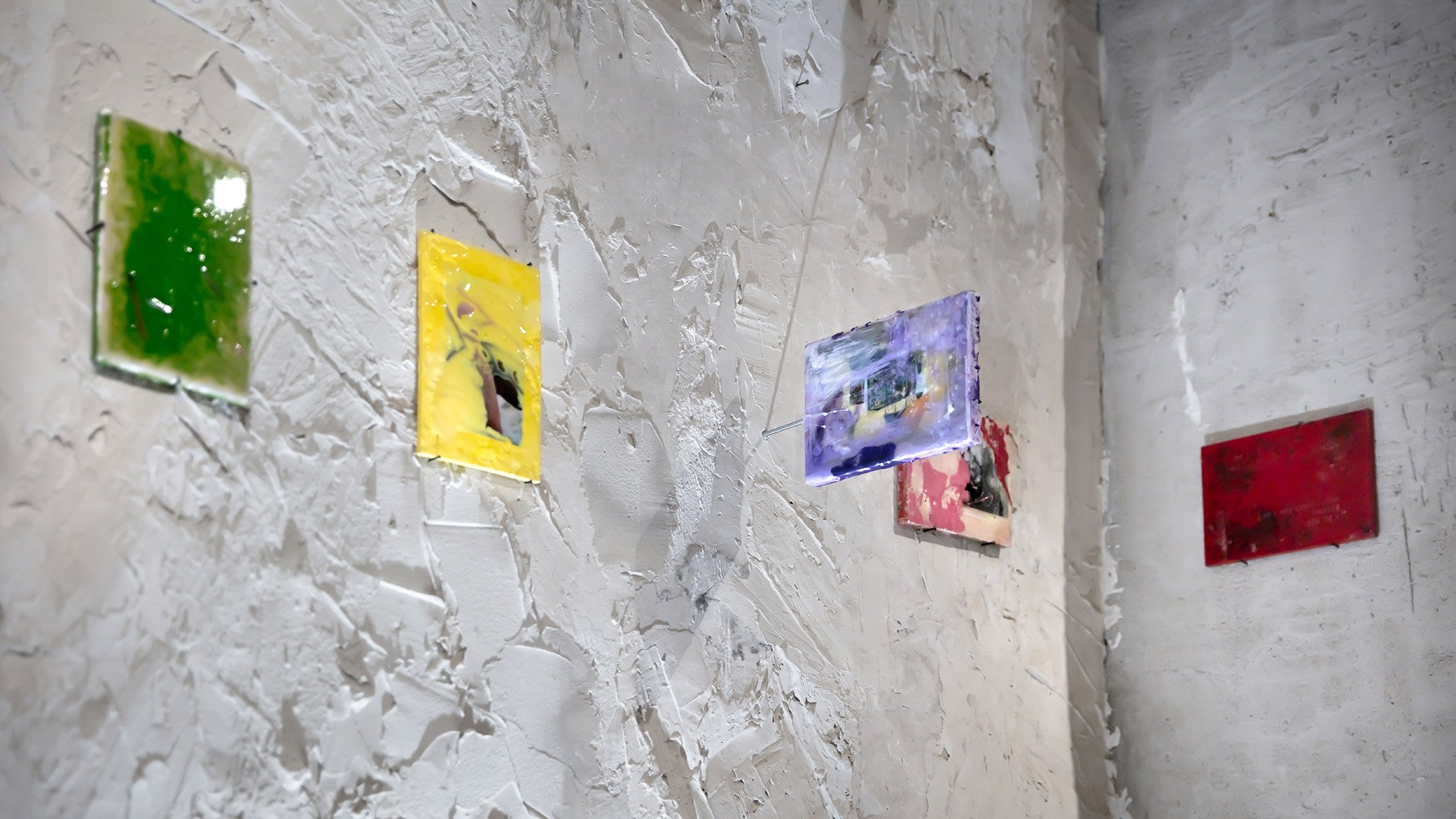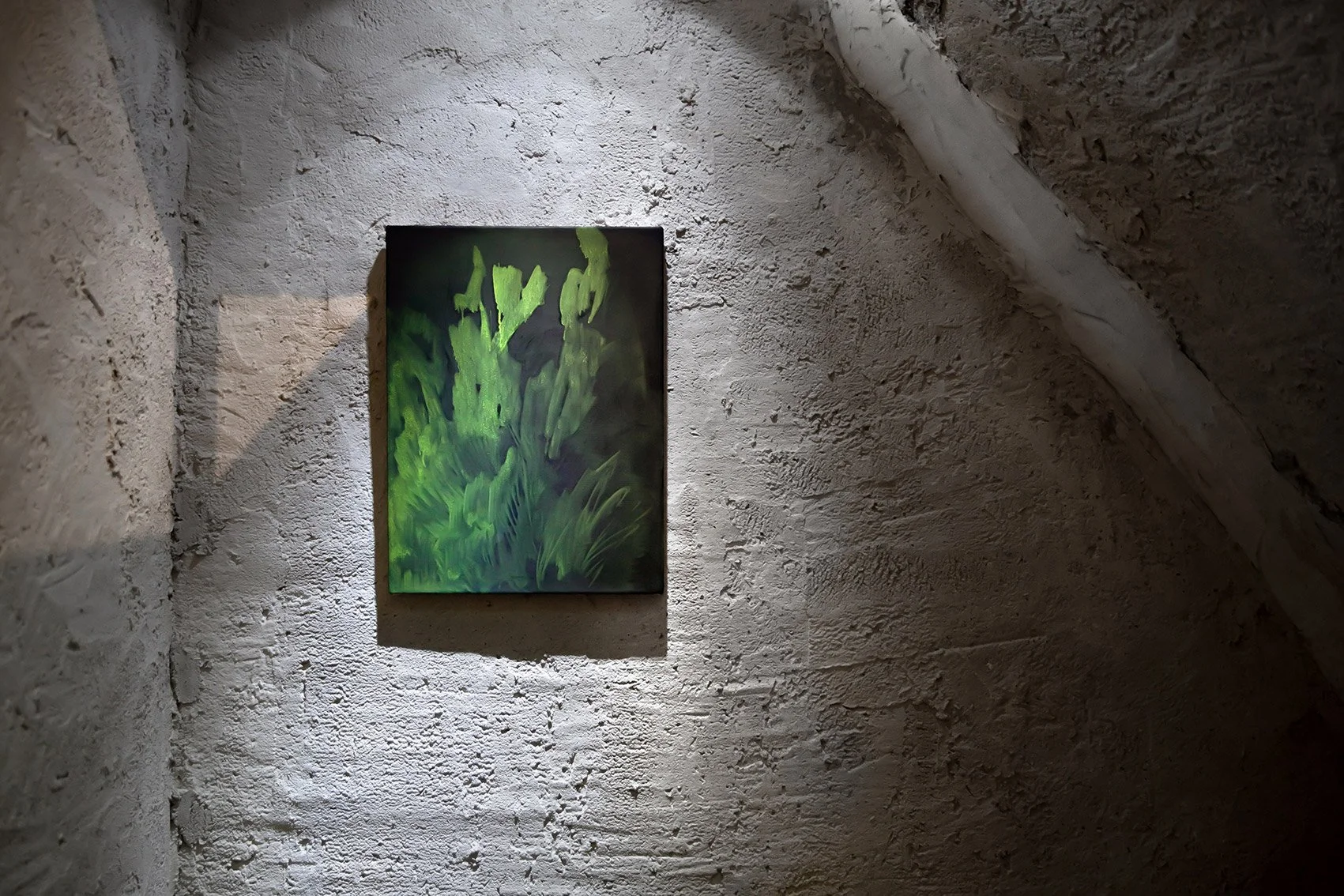Célia Boulesteix, Hit me up, 2021, steel, polyester veil, sublimation printing, polyester resin, 45 x 90 cm, Credit : Michael Patault
Célia Boulesteix
Célia Boulesteix (b.1996), lives and works in Paris. She graduated from Ecole Duper- ré in Paris in 2019 and since then has trained with many significant contemporary artists. Amongst her several collaborations at her young age she worked with David Douard for the production and editing of the exhibition, O'Ti'Lulaby, at the FRAC Ile de France in 2020. In addition to working with Théo Mercier on the commissioned pieces for the exhibition Outremonde on view at the Collection Lambert in Avignon in 2021. The works commissioned included the realization of sculptures and a fresco.
Her multidisciplinary practice explores contemporary space as a timeless, anti-monumental and intimate medium. Her plastic techniques vary according to the subject matter and unfold at different rhythms, both through specific projects that follow one another and through a long-term research between photography, sculpture and installation. The materials she uses and the way she assembles them are inspired by a device of construction and destruction of urban space that allows her to play with timelessness.
Théophile Brient, Don’t let a little dispute a great friendship, 2019, about 20 x 10 x 10 cm, Veilleuses, multi-prise, emballages, Credit: Michael Patault
Théophile Brient
Théophile Brient (b.1994) lives and works in Paris. He graduated with a double mas- ter's degree in Photo-Video and Art-Space at ENSAD Paris, obtained in 2018 and 2021. As his training progressed, he expanded his field to video, photography and installation in addition to his initial drawing practice, until he immersed himself in filmic technique during his exchange to the School of Fine Arts in Istanbul.
Brient's works have in common that they reveal, in real-life situations, characteristics of our intercultural relationships between humans, shaped by the nature of crossed iconog- raphies. The object (cultural, trivialized and globalized) takes a main place in his work, in the sense that it is a vector of real stories. It is a question for the artist of questioning what forges our glances, our manners to live the space with our paradoxes and our singularities.
Alexandre Ferreira, Xerox 7, 2021, 100 x 145 cm, Acrylic on PCV sheet, Credit : Michael Patault
Alexandre Ferreira
Alexandre Ferreira (b. 1994) lives and works in Paris. He graduated from ENSAAMA Paris and the École des Beaux-Arts de Paris in 2021, and spent a year in exchange at the Tokyo University of the Arts in 2020. Ferreira’s practice revolves around his numerous creative activities, as a painter, photographer, editor and graphic designer. He is additionally the co-founder to the collective Scandal.
Ferreira’s practice of photography and painting is built around city life and the urban world, taking root in the surroundings of cities: industrial zones, wastelands and road interchanges. These chosen environments are selected as he attempts to show that these forgotten places are sometimes territories of new possibilities, where new forms live, free and detached from any will of rationalization.
Diego Garcia Lara, Medusa 2, 2022, 200 x 130 cm, Black ink and black and white spray on canvas, Credit: Michael Patault
Diego Garcia Lara
Diego Garcia Lara (b. 1997) lives and works in Paris. Lara is currently still in his 4th year at the Beaux-Arts de Paris in the Stéphane Calais studio. Lara’s practice revolves around his numerous creative activities: printing, sculpture, drawing and painting, his preferred medium.
Mexican by origin and son of two micro-paleontologists and professors, his native culture and his education from a scientific background quickly became a major source of inspiration for the artist. Never taken out of the studio and pre- sented for the first time in a group exhibition, the Medusa diptych is part of a series of works on canvas entitled Fleuve, begun in 2021. It is a testimony, an attraction or rather a fascination that Lara has for the organic element, water.
By covering its surface with sheets of water, the artist comes to deposit his pig- ments and fragment his gestures so as to provoke "stains". They take the form of patterns, landscapes and sometimes even marine animals. His "stains" are the skeleton of his work. Gradually, the artist has integrated into his painting projec- tions of pigments on dry surfaces, forms made with stencils, objects from nature or even fabrics. His painting becomes a body in its own right: the canvas is the skin that holds all the organs that Lara paints.
Julien Heintz, Refreh exhibition view, Credit : Michael Patault
Julien Heintz
Julien Heintz (b.1997) lives and works in Parisn and is currently in his 4th year at the Beaux-Arts de Paris in the James Rielly studio. Heintz’s practice is anchored in oil painting on canvas and is articulated in different poles: in one part, coating the canvas with marble powder and fine sanding and his pictorial work, for the second part, with crushed pigments and layered steps.
Heintz’s composition combines a search for ambiguity between abstraction and figura- tion. The canvas surface is approached as a material that is both frail and workable. The support is weakened and re-evaluated, so that its preparation becomes smooth, almost as fine as a sheet of paper. It is this fragility that pushes him to apprehend the surface on which he will paint, to memorize its defects and qualities.
Favoring monochrome washes, it is the composition by thin layers of pigments that brings to light forms that he draws from influences, such as David Lynch cinematogra- phy. The artist intimately addresses our capacity to think in images.
Victoire Inchauspé, Refresh exhibition view, Bas Relief series, 2022, Credit: Michael Patault
Victoire Inchauspé
Victoire Inchauspé (b.1998) lives and works in Paris. She is currently in her final year at the Beaux-Arts de Paris, in the Pascale Marthine Tayou studio. Her artistic practice is mainly focused on volume, with a particular attention to the exploration of matter. Inchauspé works with many materials. Whether they come from industrial products such as metal, aluminum, bronze, wrought iron or whether they emanate from nature by seizing min- eral, vegetable or animal substances.
Flowers occupy a predominant place in her practice. "By drying them, I fix them in an immortality, they define and represent the way I think about my work, which is as the cycle of a life. I use this concept as the fertile moment of an end, which calls for a rebirth to transcribe and decline it in my works." as Victoire Inchauspé points out.
Brieuc Maire, Refresh exhibition view, 2022, Credit: Michael Patault
Brieuc Maire
Brieuc Maire (b. 1992) lives and works in Paris, and graduated from the Beaux-Arts de Paris in 2020. Maire developed his practice around the realm of the image and the language.
Maire’s deliberate composition, where layers are superimposed and mysterious figures emanates, results in conveying to the viewer this effect as if his paintings were timeless and frozen in time.
The acrylic sprayed by the airbrush underlies the following layers in oil, sometimes opaque, sometimes transparent. From a semantic point of view, the artist seeks in the image to embed a digestion of several influences ranging from horror movies to absurd- ist literrature, with an additional reference to Flemish primitives and the Surrealists prac- tices. In essence his work deliberatly references areas of friction where history is not given as indisputable but precisely as a breeding ground for ambiguity.
Malù dalla Piccola, Ampolle del senno perduto, 2021, XL, Gauze in resin and copper, Credit: Michael Patault
Malù dalla Piccola
Malù dalla Piccola (b.1994) lives and works in Paris, France. She was born in Rome and began painting in Moscow, where she lived for almost ten years, then pursued her studies at Central Saint Martins in London, Atelier de Sèvres and ESAG Penninghen in Paris.
Piccola investigates opposite themes such as fertility and abortion, cycle of life and trans-humanism, memory and oblivion, fragility and violence. Her practice moves seamlessly between painting, drawing, installation, sculpture and performance. Mixing science with the occult, she travels between past and future through the viewer’s memory and her own. In her last performative works Futura at Galeria Uxval Gochez, Barcelona (2019) and Damnatio Memoriae at Palazzo Scapucci, Rome (2019), Piccola worked with scientists to create mental maps, and broke down the barrier with the viewer in order to confront emotional issues through memory and oblivion.
In 2021 she presented two site-specific installations. Amnios, at Hippocampus residency, that was created as a breathing organ set to communicate with its participants, and Ampolle del senno perduto, at the Orto Botanico Corsini, composed by 60 resin and copper tear shaped ampoules containing her oil paintings floating in the botanical garden like some crystallized memories.
Malù has exhibited in a variety of European cities including Rome, Paris, London and Barcelona.
Aliha Thalien, Refresh exhibition view, Un soleil bleu est-il un soleil froid ? series, 2022 Wax, Credit: Michael Patault
Aliha Thalien
Aliha Thalien (b.1994) started out in film, before specializing in contemporary volume and video at the Beaux-Arts de Paris, at the Atelier Julien Prévieux from where she graduated from in 2021.
Aliha Thalien comes from filmic expression, time-based media, and image. Her explo- ration of plastic mediums is influenced by this approach. The various objects that populate her interior spaces make up her installations. Films and videos, photo- graphs, sound pieces, ceramic, resin, latex or wax sculptures, poems... are all elements that evoke a fantasized and romanticized daily life.
Mia Vallance, Torch, 2021, 30 x 40 cm, Oil on canvas, Credit: Michael Patault
Mia Vallance
Mia Vallance (b. 1998) is a visual artist living and working in London. She obtained a Bachelor's degree in Fine Art at Central Saint Martins in London and at the Ecole des Beaux Arts de Paris on an exchange programme in 2020.
Vallance’s creates dreamlike paintings that drift between fragmented snapshots and abstract forms that are in a state of constant evolution. In her paintings, Vallance will allow something to morph into another thing entirely, giving control over to the instrument she manoeuvres. She does this by spilling turpentine onto the canvas and wiping the image away, allowing something else to emerge. Faces burst into their surroundings, bodies dissipate into colour, transcending their form by exploding, growing, dissolving and leaking. Vallance’s work functions almost like poetry or music: the viewer experiences its substance.
Lingjun Yue, Après que le soleil se soit couché, 2021, 50 x 50 cm, Executed in 2020, 1/5, Color photograph, inkjet on paper - laminated on Dibond, Credit: Michael Patault
Lingjun Yue
Lingjun Yue (b. 1994) currently based in Montpellier, usually uses photography as her primary medium but her work composition can also include different mediums such as video, installation, and temporary sculpture. By creating a dilemma between the visible and the invisible, the artist creates new contexts in the everyday. She questions the usual, the original state of the objects to try to raise their strangeness and make them pass in another dimension, far from their own use.
The photographic series, Après que le soleil se soit couché, was initiated during the first confinement. These photographs were taken in the homes of people invited to imagine a temporary sculpture from everyday objects found in their homes.
Her light sculptures or "unstable architectures" are symbols from her native Chinese culture, evoking the small votive towers of the Buddhists, called "Marnyi Stones". "Towards Tibet, they are built next to the river with stones. They are sometimes alone, often ephemeral and fragile. They represent a hope for life and a tribute to dead souls," as Lingjun Yue says. By this act, which is similar to a ritual, the artist gives these prosaic objects, taken from everyday life, a spiritual dimension.


